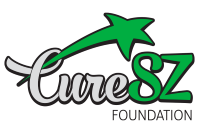
克雷格·切普克博士,CURESZ 基金会董事会成员,北卡罗来纳大学医学院私人执业精神病医生和精神病学兼职助理教授
我的 最后一栏 讨论了导致迟发性运动障碍 (TD) 的药物的去除很少会导致缓解,因此需要其自身的特定治疗。然而,在 2017 年之前没有 FDA 批准的治疗方法。美国神经病学学会 (AAN) 提出的少数选择即使是适度的建议也存在重大问题:氯硝西泮具有严重的身体依赖风险,并且某些非处方药美国政府问责办公室发现银杏叶等补充剂的含量远低于广告宣传的含量,甚至不含。1
Worse yet, the medication that seems to have become the de facto standard-of-care in the United States for nearly all drug-induced movement disorders is benztropine (“Cogentin”). Not only does it carry a heavy side-effect burden, its use in TD has been categorized as “unsubstantiated” by the AAN because there have been no controlled clinical trials. Even the manufacturer’s official prescribing information says benztropine does not help TD and can aggravate its symptoms.2
Tetrabenazine, a medication from the 1950s, was not originally intended to treat TD but was found to have some benefit in other hyperkinetic movement disorders. Tetrabenazine inhibits a protein called VMAT2, which collects dopamine for release. People with TD have hypersensitive motor circuits, so inhibiting VMAT2 reduces the amount of dopamine released into those areas, alleviating some of the symptoms. Unfortunately, the active components of tetrabenazine are eliminated from the body so quickly, it must be taken three times a day and leads to greater side effects, which limited its use.
In 2017, the FDA brought new hope to those suffering with TD by approving two highly effective medications to treat it. Both valbenazine and deutetrabenazine were derived from the tetrabenazine prototype but delivered improvements in side effects and convenience by slowing its metabolism – each with a different twist. Valbenazine slows elimination by elegantly attaching the amino acid valine to the component of tetrabenazine that is the most potent and selective. Deutetrabenazine slows the elimination by cleverly swapping eight of tetrabenazine’s hydrogen atoms for those of a close variant of hydrogen called deuterium.
Valbenazine and deutetrabenazine are both usually well-tolerated and have roughly similar benefits on average. Depending on the person, one may be more favorable than the other, and each has a different trade-off. Valbenazine has two once a day dosing options, both of which can be therapeutic. Deutetrabenazine has more potential dose options, but must be taken twice a day and requires titration over several weeks to the effective doses. VMAT2 inhibitors only treat the symptoms of TD and are not curative. If treatment with any of them is stopped, the symptoms return to their pre-treatment levels. Still, an increasing focus of psychiatric research involves circuits in the brain that use the neurotransmitter glutamate, which facilitates “synaptic plasticity,” essentially the brain’s ability to rewire itself. It will take much more investigation, but it is theoretically possible that future medications that modulate glutamate signaling could be found to help the brain remodel itself from the damage of TD.
或许TD的希望曙光才刚刚开始!
参考:
1. https://www.gao.gov/assets/700/696047.pdf
2. Benztropine mesylate [包装插页],Lake Forest,IL:Akorn, Inc. 2016。

